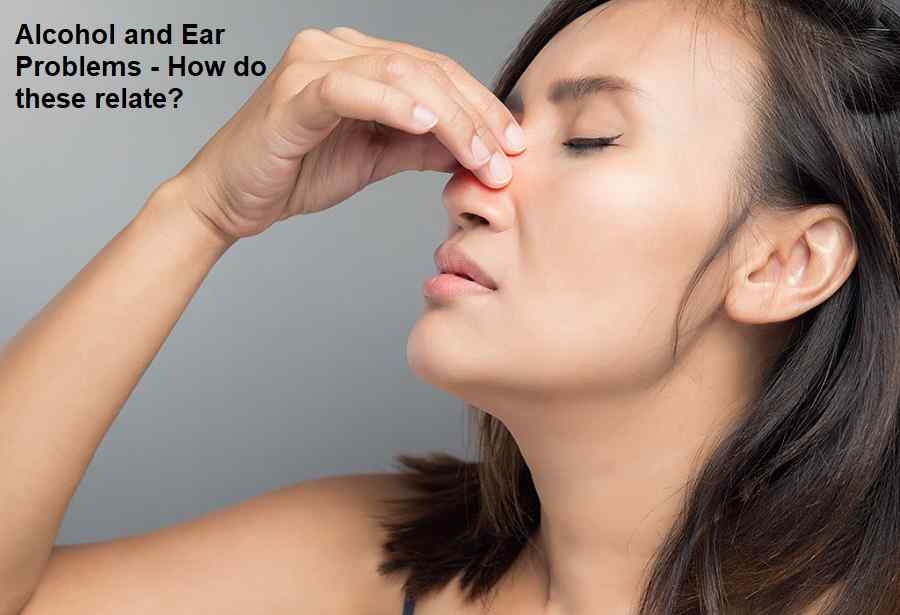The Hazards of Prolonged Sitting & 10 Tips to Reducing Health Risks
What is Prolonged Sitting? and Side Effects of Sitting Down All Day

In today’s world, sedentary lifestyles and prolonged periods of sitting have become increasingly common. With the prevalence of desk jobs, extended screen time, and a lack of physical activity, our bodies are being subjected to prolonged sitting more than ever before. However, what many people may not realize is that our bodies are naturally designed for regular movement, and prolonged sitting can lead to a wide range of health hazards. In this comprehensive guide, we will explore in detail the significant health risks associated with prolonged sitting and provide comprehensive guidance on how to reduce these negative effects.
The Health Hazards of Prolonged Sitting
Cardiovascular Concerns:
Sitting for extended durations can impair circulation, increasing the risk of cardiovascular diseases such as heart attacks, strokes, and high blood pressure. When you sit for long periods, blood flow slows down, and this can lead to the formation of blood clots, which may pose a serious threat to your heart and overall cardiovascular health.
Obesity and Metabolic Syndrome
Prolonged sitting is often linked to weight gain and a higher likelihood of developing metabolic syndrome. Metabolic syndrome is a cluster of conditions that includes high blood pressure, elevated blood sugar levels, excess abdominal fat, and abnormal cholesterol levels. These factors significantly increase the risk of diabetes, heart disease, and other chronic health issues.
Musculoskeletal Problems and Poor Posture
Spending hours on end in a seated position can result in various musculoskeletal problems. Poor posture is a common consequence, leading to muscle imbalances and strain on the neck, shoulders, and lower back. Over time, this can result in chronic pain and more severe musculoskeletal disorders.
Deep Vein Thrombosis (DVT)
Deep vein thrombosis is a condition where blood clots form in the deep veins of the legs. Prolonged sitting can increase the risk of DVT, as blood flow in the lower extremities becomes sluggish, potentially leading to the formation of dangerous blood clots that can travel to other parts of the body.
Increased Risk of Type 2 Diabetes
Sedentary behavior can lead to insulin resistance, a condition where the body’s cells do not respond properly to insulin. This insulin resistance increases the risk of developing type 2 diabetes, a chronic condition characterized by elevated blood sugar levels.
Mental Health Impacts
Prolonged sitting has been associated with an increased risk of mental health issues such as anxiety, depression, and other psychological challenges. The lack of physical activity and the isolation associated with desk jobs can contribute to these issues.
Read More – Benefits of Soymamicoco
Decreased Muscle Strength and Flexibility
A sedentary lifestyle can lead to muscle atrophy, where muscles weaken and shrink due to lack of use. Additionally, sitting for extended periods can reduce flexibility, making it more difficult to perform physical tasks and increasing the risk of injury.
Reducing the Negative Side Effects of Sitting
To mitigate the health risks associated with prolonged sitting, it is essential to incorporate regular movement and exercise into your daily routine. Here’s a comprehensive guide on how to reduce the negative effects of sitting:
1. Take Regular Breaks
One of the simplest and most effective ways to combat the negative effects of sitting is to take regular breaks. Stand up and move around for a few minutes every 30-60 minutes. This simple action can improve circulation, reduce muscle stiffness, and break the cycle of prolonged sitting.
Sitting is the new smoking. Stand up and move around to break the cycle of prolonged sitting.
2. Maintain Good Posture
When you are sitting, ensure that you sit up straight with your feet flat on the floor. Your knees should be at a 90-degree angle, and your back should be well-supported by the chair. Proper ergonomics can significantly reduce the strain on your spine and muscles.
“Maintaining good posture while sitting is crucial to reduce strain on your spine and muscles.
Read More – Buší Dishes
3. Stretch
Perform stretches that target muscles commonly affected by sitting, such as hip flexors, hamstrings, and lower back muscles. Regular stretching can help prevent stiffness and pain.
Stretching is essential to counteract the negative effects of sitting on muscle tightness and maintain flexibility.
4. Opt for Standing or Walking
Consider using a standing desk if possible, or take walking meetings instead of sitting in a conference room. Even standing up while on phone calls can help reduce your overall sitting time.
Standing and walking are effective ways to reduce sitting time and promote more movement throughout the day.
5. Regular Exercise
Aim for at least 150 minutes of moderate-intensity aerobic activity or 75 minutes of vigorous-intensity aerobic activity each week, as recommended by health guidelines. Additionally, engage in muscle-strengthening activities on two or more days a week.
Regular exercise is crucial for overall health and can counteract the negative effects of prolonged sitting.
6. Incorporate More Physical Activity into Your Daily Routine
Take the stairs instead of the elevator, walk or bike to work if possible, and find ways to be more active during your leisure time. Every little bit of movement counts.
Incorporating physical activity into your daily routine is key to reducing the negative effects of sitting and promoting overall health.
Read More – Balancing Nutrition and Exercise
7. Use an Ergonomic Chair
Invest in a chair that provides proper support for your lower back and encourages good posture. Ergonomic chairs can significantly improve comfort and reduce the risk of musculoskeletal problems.
Using an ergonomic chair can help maintain good posture and reduce the risk of musculoskeletal issues associated with prolonged sitting.
8. Adjust Your Computer Monitor
Your computer monitor should be at eye level or slightly below, about an arm’s length away, to prevent neck and shoulder strain. Proper monitor placement is crucial for maintaining good posture.
Proper placement of your computer monitor is essential to maintain good posture and prevent neck and shoulder strain.
9. Stay Hydrated
Drinking water regularly can help maintain energy levels and prevent muscle fatigue. Staying hydrated is essential for overall health.
Staying hydrated by drinking water regularly is crucial to maintain energy levels and prevent muscle fatigue.
10. Consider Alternative Work Setups
Explore alternative seating options such as balance balls, kneeling chairs, or treadmill desks. These options can engage your muscles and promote better posture while working.
Alternative work setups like balance balls, kneeling chairs, or treadmill desks can promote better posture and engage your muscles.
Read More – Ulcuprazol
How Sitting Affects Your Muscles
Prolonged sitting can have a profound impact on various muscle groups in your body. Here’s how sitting affects different muscles:
1. Hip Flexors
Prolonged sitting can lead to tight hip flexors, specifically the iliopsoas muscle group. These muscles are responsible for flexing the hip joint and are engaged when you lift your knee towards your chest. When you sit for extended periods, these muscles remain in a shortened state, which can lead to tightness and restricted hip mobility.
2. Hamstrings
The hamstrings are a group of muscles located at the back of the thigh. They help bend the knee and extend the hip. When you sit for a long time, the hamstrings are in a shortened position, which can lead to tightness and limit your range of motion.
3. Gluteal Muscles
The gluteal muscles, located in your buttocks, are responsible for hip extension, abduction, and external rotation. Sitting for extended periods can cause the gluteal muscles to become weak and underactive, a condition sometimes referred to as “gluteal amnesia” or “dead butt syndrome.”
4. Chest Muscles
Sitting for long periods, especially when hunched over a computer or phone, can lead to tight chest muscles, specifically the pectoralis major and minor. This tightness can cause rounded shoulders and poor posture.
To counteract the negative effects of prolonged sitting on these muscles, it is essential to take regular breaks from sitting, stand up, and engage in physical activity throughout the day. Incorporate stretching and strengthening exercises into your routine to maintain flexibility, improve posture, and maintain overall muscle health.
Read More – Is Watermelon Good
Shortening of Several Muscles from Prolonged Sitting
In addition to specific muscle groups, prolonged sitting can lead to the shortening of several muscles, further contributing to musculoskeletal issues. Here are some key muscles affected by sitting:
- Hip Flexors: Prolonged sitting can lead to tight hip flexors, specifically the iliopsoas muscle group. These muscles are responsible for flexing the hip joint and are engaged when you lift your knee towards your chest. When you sit for extended periods, these muscles remain in a shortened state, which can lead to tightness and restricted hip mobility.
- Hamstrings: The hamstrings are a group of muscles located at the back of the thigh. They help bend the knee and extend the hip. When you sit for a long time, the hamstrings are in a shortened position, which can lead to tightness and limit your range of motion.
- Gluteal Muscles: The gluteal muscles, located in your buttocks, are responsible for hip extension, abduction, and external rotation. Sitting for extended periods can cause the gluteal muscles to become weak and underactive, a condition sometimes referred to as “gluteal amnesia” or “dead butt syndrome.”
- Chest Muscles: Sitting for long periods, especially when hunched over a computer or phone, can lead to tight chest muscles, specifically the pectoralis major and minor. This tightness can cause rounded shoulders and poor posture.
To counteract the shortening of these muscles and the associated negative effects of prolonged sitting, it is important to maintain a regular exercise routine and engage in stretching and strengthening exercises targeting these muscle groups. Additionally, try to take breaks throughout the day to stand, walk, or perform simple stretches to help prevent muscle tightness and maintain flexibility.
Conclusion
Prolonged sitting is a significant health concern in today’s modern lifestyle. It has been associated with a range of health hazards, including cardiovascular problems, obesity, musculoskeletal issues, and mental health impacts. Additionally, sitting can lead to the shortening and weakening of various muscle groups in the body.
To mitigate these risks and maintain overall health, it is crucial to incorporate regular movement and exercise into your daily routine. Taking breaks from sitting, maintaining good posture, and engaging in stretching and strengthening exercises are essential strategies for reducing the negative effects of prolonged sitting. By making these lifestyle changes, you can help ensure that your body remains healthy, flexible, and strong, even in a sedentary world.
FAQ about Prolonged Sitting
What is a balanced diet, and why is it important?
A well-balanced diet encompasses a diverse range of foods from all food groups, supplying vital nutrients essential for overall health. It not only fosters proper growth and sustained energy but also acts as a preventive measure against nutritional deficiencies and various diseases.
How many hours of sleep should I get each night for optimal health?:
For optimal health, adults typically require 7-9 hours of quality sleep each night. This sleep duration is crucial for supporting both physical and mental well-being, contributing to a harmonious balance in one’s overall health.
What are the benefits of regular exercise?
Engaging in regular exercise not only enhances cardiovascular health but also builds strength, uplifts mood, increases flexibility, and aids in maintaining a healthy weight. It stands as a cornerstone for a holistic approach to well-being.
How can I manage stress effectively?
Effectively managing stress involves incorporating techniques such as deep breathing, meditation, yoga, and regular exercise into your routine. Seeking support from friends, family, or a therapist adds another dimension to stress resilience.
What are the primary risk factors for heart disease?
Identifying primary risk factors for heart disease is vital. High blood pressure, high cholesterol, smoking, obesity, diabetes, family history, and a sedentary lifestyle are key factors to address in heart health management.
How can I maintain a healthy weight?
Achieving and maintaining a healthy weight is attainable through a combination of a balanced diet, regular physical activity, mindful portion control, and avoiding excessive calorie intake.
What is the recommended daily water intake for adults?:
The general guideline recommends drinking at least 8 glasses (approximately 2 liters) of water per day for adults. However, individual needs may vary based on factors such as activity level and climate.
Are there any natural remedies for common cold and flu symptoms?
Combat common cold and flu symptoms through natural remedies like rest, hydration, hot tea with honey, and over-the-counter cold remedies.
What is the importance of mental health, and how can I improve it?
Mental health is integral to overall well-being. Strategies to enhance mental health include seeking support, practicing mindfulness, and adopting a healthy lifestyle.
What are the benefits of meditation and mindfulness?
Meditation and mindfulness practices contribute to stress reduction, improved focus, increased self-awareness, and enhanced emotional well-being.
How can I boost my immune system naturally?
Boost your immune system through a holistic approach that includes a balanced diet, sufficient sleep, stress management, regular physical activity, and good hygiene practices.
What is the relationship between nutrition and hair health?
Proper nutrition, featuring essential vitamins and minerals like biotin and iron, plays a pivotal role in sustaining healthy hair.
What are the best practices for maintaining good oral hygiene?
Sustain oral health by incorporating regular brushing and flossing into your routine, scheduling routine dental check-ups, and minimizing sugar and tobacco use.
What is the recommended frequency for health check-ups and screenings?:
The frequency of health check-ups and screenings varies based on age, sex, and individual risk factors. Consult with your healthcare provider for a personalized schedule tailored to your specific needs.
For further insights into health and well-being, visit wellhealthorganic.com:health-hazards-of-prolonged-sitting.
Follow – https://www.healthcaresutra.com for More Updates


